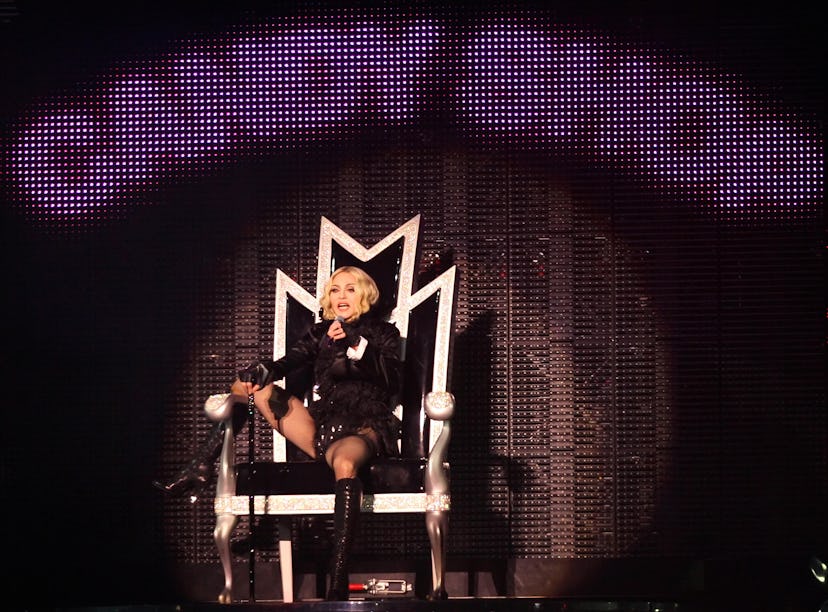Madonna Celebrates the 30th Anniversary of Her Biggest Controversy Ever

When you’re Madonna, it’s probably hard to keep track of all the various controversies you’ve sparked throughout your career, let alone their exact anniversaries, but the queen of pop took time out of her schedule over the past two days to celebrate the 30th birthday of one of her controversies that grew so large that the actual pope got directly involved. No, it wasn’t the release of the Sex book, or that time she called Lady Gaga “reductive”; instead, Madge was fondly remembering the release of “Like a Prayer” and the worldwide media spectacle that ensued.
“Happy Birthday to Me and Controversy!” she wrote on Instagram, noting that the upset over the song’s music video was all because she “kissed a black saint and danced in front of burning crosses!”
Of course, Madonna has actual reason to celebrate. The controversy marked a turning point in her career, transforming her in the eyes of critics from provocative pop commodity into an artist capable of producing work as challenging if not more so than that of musicians of any other genre.
The release of “Like a Prayer” came at a decisive time in Madonna’s life. She had just turned 30, and gossip magazines at the time had already taken to poking fun at her age (which, as many have noted, was also the age at which her mother died). Her marriage to Sean Penn had ended in divorce earlier that year, and the ’80s dance pop she had perfected over her first three albums could only carry her for so much longer as the ’90s approached. So for her fourth album, Madonna decided to get personal, exploring her inner thoughts and her own past more deeply. That, obviously, included her deeply Catholic upbringing. Written in just three hours, with the coproducer Patrick Leonard, “Like a Prayer” was “officially” written from the perspective of a young girl deeply in love with Jesus. Of course, the lyrical double entendres were so obvious that even Leonard was hesitant. Even if Madonna has always maintained that the song was supposed to be genuinely spiritual, it turns out prayer isn’t the only thing one can do when down on one’s knees.
Despite those provocations, Madonna struck a then groundbreaking deal with Pepsi. The song would premiere in a commercial for the brand (of which she had some measure of creative control), and the soft-drink giant would sponsor her tour. That commercial, featuring Madonna interacting with a young actress playing her childhood self, premiered on Grammys night in 1989 to little controversy.
Then, the next day, MTV premiered the actual video. Directed by the horror specialist Mary Lambert, the video is essentially a jumble of different influences from both women (an interracial romance, a saint come to life, the vague idea that racism is bad, burning crosses, the singer being flung into the clouds like a beach ball, and, for some reason, a murder mystery and police investigation), but the plot didn’t have to be exact for the imagery to spark furor. Christian groups protested the supposed blasphemy about as quickly as anyone could in the pre–social media days of 1989. Pope John Paul II supported a complete boycott of the singer in Italy. At the same time, Pepsi, which had nothing to do with the official video, dropped its sponsorship of the singer (even if she reportedly got to keep her multimillion-dollar advance).
But the attention didn’t hurt. “Like a Prayer” shot to number one on music charts around the globe (including in Italy), found it’s way onto numerous year-end and all-time best-of lists, and arguably remains Madonna’s best song. It affirmed that not only would Madonna transition to the ’90s just fine, but she’d enter the decade as something more than she had been: a serious pop auteur.